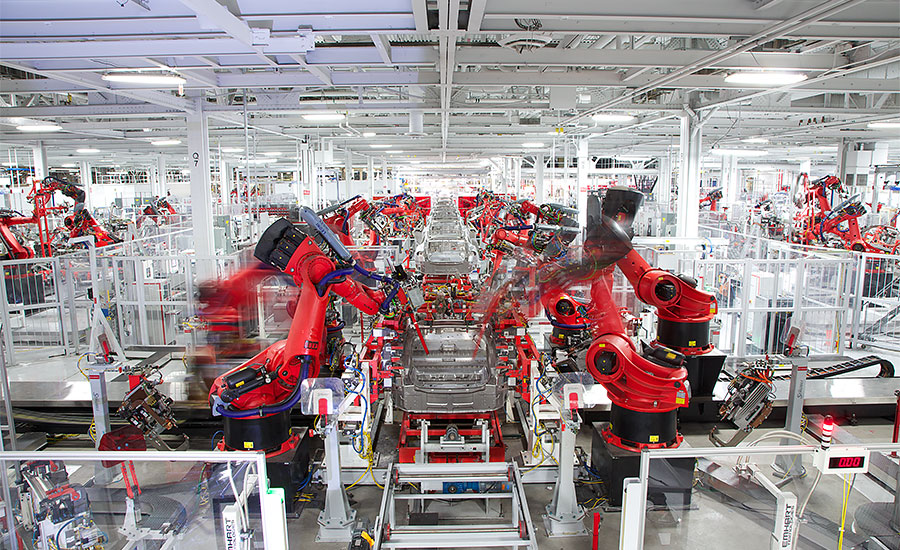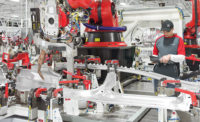One month after ISHN published its October issue cover story on Tesla’s quest to have the safest factory in the world, Tesla’s safety and health practices were again in the news. On November 5, 2018, the Center for Investigative Reporting published an article, “Inside Tesla’s factory, a medical clinic designed to ignore injured workers.”
The electric car maker was accused by former third-party medical clinical staffers of systematically sending injured workers back to the job to keep as many patients as possible off the injury logs. Among the claims: Access Omnicare, the clinic in the Fremont plant that employs 10,000 Tesla workers turned away temp workers on occasion; chest pain, breathing problems and headaches in some cases were dismissed as not work-related; and some workers injured with lacerations, burns, strains and sprains could not be given work restrictions no matter what.
Follow up
ISHN went back to Tesla for its side of the story. A company spokeswoman dismissed the article as “sensationalism.” In a third-quarter earnings call with stock analysts on October 24, before the damaging article was published, EHS VP Laurie Shelby said a four-month investigation by a hired third party found Tesla to be “recording properly and doing as we should be. So it’s much different than what you would read about in the press.”
Shelby continued: “When injuries do occur, we get the absolute best case for our associates and it’s actually overseen by one of California’s leading orthopedic surgeons.” Shelby said 80-85 percent of the factory’s injuries are sprains and strains, and workers “get the best care here on site and we have 24/7 care. We’re staffed by three full-time doctors and nurses and I’m really super happy with the care they’re giving, and I think employees are as well.”
Outside reviews
Last May, Tesla sent ORCHSE consultant Rich Fairfax, a former OSHA top official, about 30 cases of incidents and injuries from 2015 and ‘16. Says Fairfax: “Many of the cases they had regarded as not being a lost time or restricted activity case I felt were recordable as such – Tesla did not argue and made the changes.” Fairfax adds that the cases he reviewed were evaluated and logged by the “old” EHS group that is no longer there.
ORCHSE’s Steve Newell, a preeminent recordkeeping authority from his OSHA days, recently led a team that assessed Tesla’s process for tracking and recording work-related injuries and illnesses. He says, “I can say with confidence that they are working hard to prevent cases from occurring and to accurately capture and record the cases that do occur.”
Newell describes a system Tesla launched this summer that inter-links the injured employee, their supervisor, medical, workers’ compensation, and the function in charge of OSHA recordkeeping so that all of the key parties can participate in a two-way dialog that he says “will enhance treatment and care of the employee, prevent re-injury, ensures that benefits are paid promptly, and makes sure that the case is recorded properly.” Newell calls this system “advanced when compared to many of the other companies that I assist.”
Not perfect
Both Fairfax and Newell reached the same conclusion after their visits to the Fremont factory: Is Tesla perfect? Of course not. No one is. Says Newell: “So there are likely individual situations where an employee could have been handled better. But I truly believe that is the exception, not the rule.”
Says Fairfax: “I found (Telsa’s) EHS staff dedicated, hard-working, and all wanting to improve the health and safety for all the workers.”
Beyond Tesla
Newell says Tesla’s mishandling of any cases is the exception, but a number of safety and health pros contacted by ISHN paint a discouraging picture of many employers trying to keep injuries off the books through various tactics – an unethical and immoral practice that has bedeviled safety department credibility in many cases for a century.
“When I talk to companies, especially small ones, they have no clue that they even have to complete the OSHA 300 log,” says safety vet Mark Hansen. “Many of my colleagues have no idea how to case manage.” Hansen says at times he must play the “first sergeant” and get some injured workers back on the job and off light duty to make them more productive.
The reasons for keeping injuries off the book are many and haven’t changed in decades: safety pros fearful of reporting injuries to the C-suite and looking poorly; the C-suite still enamored with OSHA lagging indicator recordables; the threat of bonuses being withheld; the threat of contracts lost; and safety incentive and recognition programs that reward zero injuries and pressure employees not to report hurts that can be hidden.
Pressure points
“I think active fudging by companies has been reduced,” says consultant Corrie Pitzer, “but replaced by internal, inadvertent pressures not to report incidents when possible.”
“In 2018, I see more fear of reporting injuries,” says consultant Paul LaDuke. “It can be seen as a stain on your resume forever. Many people seek outside medical help because they don’t want to be a pariah or they know the company will just fight the claim. He points to another fear factor: losing your job. “They fear the pressure of the connection between injuries and overall job security. If I get hurt, it hurts the company’s ability to win business, possibly from mega-customers. If the company doesn’t win business, employees fear they lose their jobs.”
Improved compliance
Employers take the OSHA recordkeeping requirements spelled out in 1904 much more seriously today than they did back in the 1980s, according to Rich Fairfax, when the agency was making headlines with six-figure penalties for recordkeeping violations and it was not uncommon for employers to keep two sets of books, one that they showed OSHA and the “real” one, says Fairfax.
Justin Porter, a young safety and health professional, says the industry should be looking past the OSHA rates (which many pros believe are of meaningless diagnostic value) and formalizing return-to-work programs to drive down their total cost of risk. “A formal return-to-work program can positively impact a company’s indemnity claim costs, litigation expenses, and claims closure metrics,” he says. Use Physical Demand Assessments to identify specific temporary transitional duties and compliance with the Americans with Disabilities Act (ADA).”
That’s the type of work Dr. Basil Besh, the hand surgeon who founded Access Omnicare, said in a statement that he using. “The difference between subjective complaints of pain, which cannot be proven and are often magnified, and objective signs, are only found on careful clinical examination by an experienced physician. If patients are injured and continued work presents safety issues for the patient, myself and my fellow physicians prescribe the appropriate work restrictions. Any suggestion that myself or any of my medical team at Access Omnicare allow external factors to influence our medical care in any way is false and inaccurate.”







